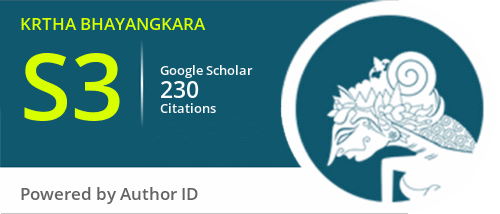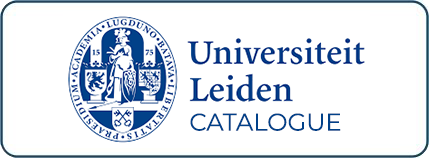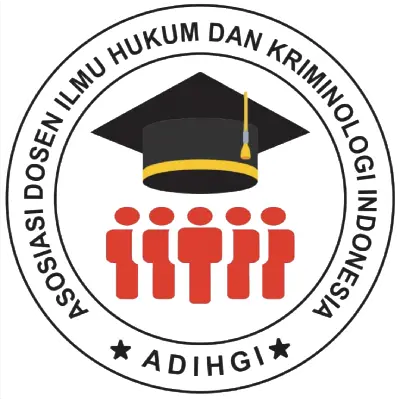Counterfeit Culture dalam Perkembangan UMKM: Suatu Kajian Kekayaan Intelektual
DOI:
https://doi.org/10.31599/krtha.v16i2.1215Keywords:
Counterfeit Culture, MSMEs, Intellectual PropertyAbstract
The development of the economy in Indonesia, as in other countries, always goes hand in hand with increasing purchasing power and a culture of consumerism. Especially in the world of fashion, this is very obvious. Coupled with the development of technology and the ease of getting information, various kinds of fashion trends from anywhere in the world can easily spread to other parts of the world. Indonesia's position as one of the countries with the largest number of social media users in the world has made Indonesia one of the most lucrative markets for business actors in the fashion world. Various kinds of well-known fashion brands can be easily found in everyday life, from economical ones to very expensive ones, also known as luxury brands. But in reality, not all groups of people are able to follow fashion trends that change frequently. The people's inability to buy certain fashion products is exploited by MSME business actors who make a living in the convection industry, by selling fake fashion products or better known as counterfeit. The use of fake fashion products has become a public secret, and the prestige and glamor gained from using these fashion products are no longer felt by those who use genuine or authentic products. This study explores the development of a counterfeit culture that is developing in Indonesia, the social impact and impact on the development of convection SMEs, as well as analyzing the legal elements behind this phenomenon, in accordance with the existing intellectual property law in Indonesia.
References
DAFTAR PUSTAKA
Amrani, H. (2018). Urgensi Perubahan Delik Biasa Menjadi Delik Aduan dan Relevansinya terhadap Perlindungan dan Penegakan Hak Cipta. Undang: Jurnal Hukum, 1(2), 347-362.
Andzulis, J. M., Panagopoulos, N. G., & Rapp, A. (2012). A review of social media and implications for the sales process. Journal of personal selling & sales management, 32(3), 305-316.
Barry, T. J. (2020). Finicky Consumerism, Volatile Investment, and the Puzzle of Low Wages in the High-Tech Economy. International Journal of Economics, Business and Management Studies, 7(1), 95-118.
Bearden, W. O., Netemeyer, R. G., & Teel, J. E. (1989). Measurement of consumer susceptibility to interpersonal influence. Journal of consumer research, 15(4), 473-481.
KRTHA BHAYANGKARA | Volume 16 Number 2, December 2022
Muhammad Deovan Reondy Putra, Hari Sutra Disemadi 313
Carter, Zoe. (2021). The duality of fashion: How industry norms impact market returns in the fashion industry. Chancellor’s Honors Program Projects.
Citrawan, H., & Rasyidi, A. F. (2019). Efektivitas Penegakan Hukum Di Bidang Kekayaan Intelektual Oleh Penyidik Pegawai Negeri Sipil. Mimbar Hukum-Fakultas Hukum Universitas Gadjah Mada, 31(2), 174-190.
Indriyani, R., & Suri, A. (2020). Pengaruh Media Sosial Terhadap Keputusan Pembelian Melalui Motivasi Konsumen Pada Produk Fast Fashion. Jurnal Manajemen Pemasaran, 14(1), 25-34.
Lestari, S. B. (2014). Fashion sebagai Komunikasi Identitas Sosial di Kalangan Mahasiswa. Ragam Jurnal Pengembangan Humaniora, 14(3), 225-238.
Leung, A.C.Y., Yee, R.W.Y. and Lo, E.S.C. (2015), Psychological and Social Factors of Fashion Consciousness: An Empirical Study in the Luxury Fashion Market, Research Journal of Textile and Apparel, Vol. 19 No. 3, pp. 58-69. https://doi.org/10.1108/RJTA-19-03-2015-B008
Lim, X. J., Radzol, A. M., Cheah, J., & Wong, M. W. (2017). The impact of social media influencers on purchase intention and the mediation effect of customer attitude. Asian Journal of Business Research, 7(2), 19-36.
Marticotte, F., & Arcand, M. (2017). Schadenfreude, attitude and the purchase intentions of a counterfeit luxury brand. Journal of Business Research, 77, 175-183.
Minton, M. (2018). Will ‘Green’be the ‘New Black’?: investigating how sustainability impacts perceptions of brand and product value in the luxury sector (Master's thesis).
Moon, M.A., Javaid, B., Kiran, M., Awan, H.M. and Farooq, A. (2018). Consumer perceptions of counterfeit clothing and apparel products attributes, Marketing Intelligence & Planning, Vol. 36 No. 7, pp. 794-808. https://doi.org/10.1108/MIP-11-2017-0272
Nelken, D. (2014). Thinking About Legal Culture. Asian Journal of Law and Society, 1(2), 255-274.
Priporas, C. V., Kamenidou, I., Kapoulas, A., & Papadopoulou, F. M. (2015). Counterfeit purchase typologies during an economic crisis. European Business Review.
Vecchi, A. (2020). The Circular Fashion Framework-The Implementation of the Circular Economy by the Fashion Industry. Current Trends in Fashion Technology & Textile Engineering, 6(2), 31-35.
Viana, N. A. (2016). Digital wine marketing: Social media marketing for the wine industry. In BIO Web of Conferences (Vol. 7, p. 03011). EDP Sciences.




































